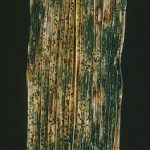Mental health articles
OF mental health care and mentally ill
Nightmares and night terrors
Nightmares and night terrors While night terrors and nightmares usually occur in children between five and twelve years, they may begin during the toddler and preschool period. They are referred to as parasomnias, that is, disorders of arousal where motor and autonomic activation intrude on ongoing sleep. Night terrors occur in NREM (quiet) sleep, in males more than females and there is often a positive family history (Anders et al., 2000; Minde, 1997). It is difficult to know the difference between a bad dream or nightmare with a toddler as the symptoms of intense crying, poor responsiveness and inability to report the content of the dream can occur in either situation. Clinically, these children have no difficulty going to bed but wake crying one to three hours later and seem inconsolable. Very often, after one or other parent sits quietly consoling and holding the child, the crying ceases and the child returns to sleep. The next day the child has no memory of the night disturbance. In contrast, nightmares are arousal from REM sleep, occur in the latter part of night sleep and are associated with dream accounts involving fears or anxiety. If the child has speech, nightmares can be recalled the next day. Once again, parent involvement at the time of the nightmare with lots of reassurance that the child is safe and protected, and a reduction in stress during the day, is the most effective treatment.
Post Footer automatically generated by wp-posturl plugin for wordpress.
More from my site
Tags: nightmares







Leave a Reply